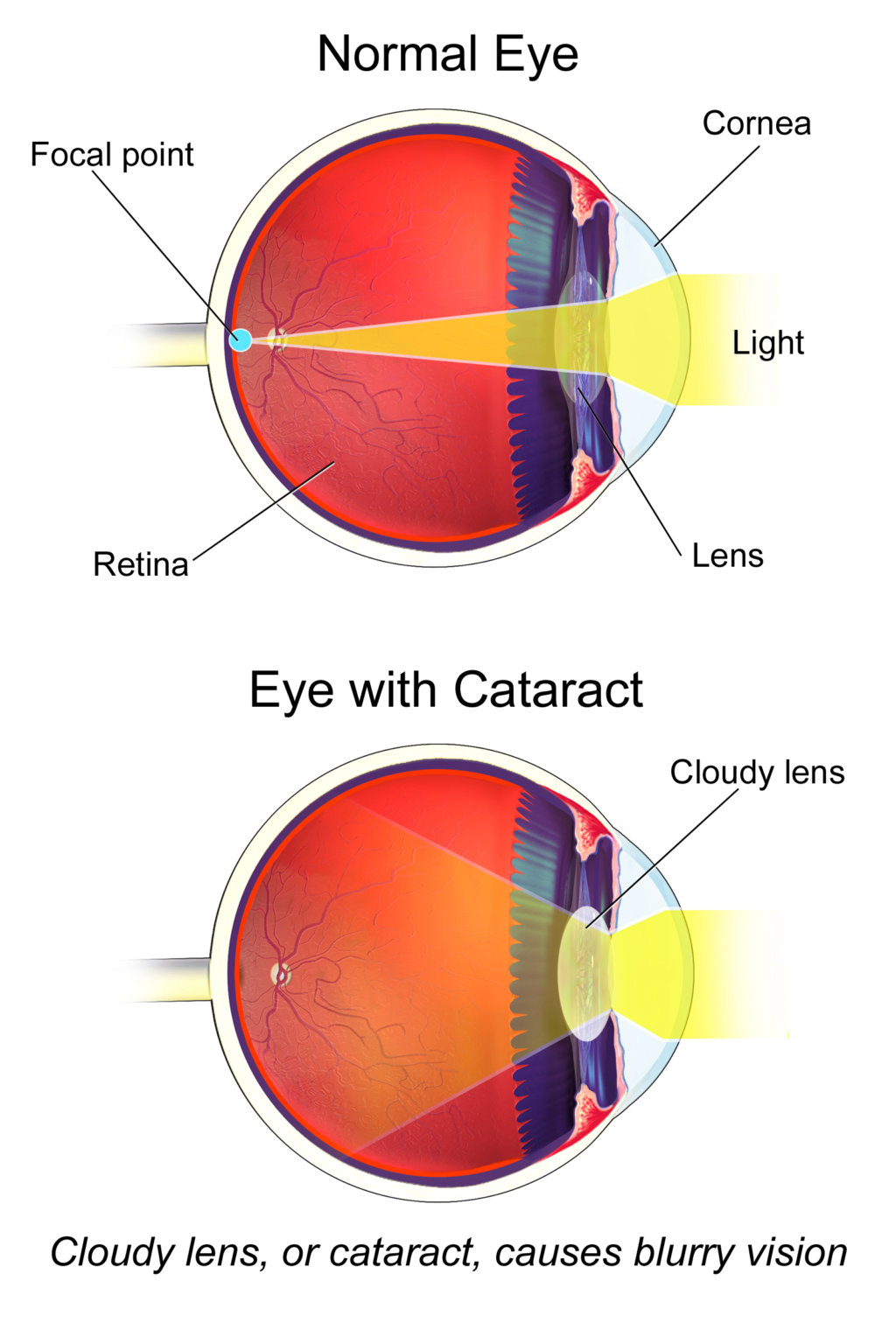Over fifty percent of people over the age of 60 (and quite a few younger than that) suffer from cataracts. Almost everyone develops cataracts as they grow older. Cataract formations occur at different rates and can affect one or both eyes.
A cataract is a progressive clouding of the eye's natural lens. It interferes with light passing through the eye to the retina. Aging and other factors cause proteins in the eye's lens to clump together forming these cloudy areas. Early changes may not disturb vision, but over time cataracts typically result in blurred or fuzzy vision and sensitivity to light. People with progressed cataracts often say they feel as if they're looking through a waterfall or a piece of wax paper.
Your eye doctor can perform certain tests to determine how much your vision has been affected by a cataract. But typically, when decreased vision affects your everyday activities or hobbies, a cataract should be treated.
Currently there is no medical treatment to reverse or prevent the development of cataracts. Once they form, the only one way to achieve clear vision again is through cataract surgery.

Currently there is no medical treatment to treat cataracts. Once they form, your choice is to live with them or the only way to see clearly again is to have them removed. Modern cataract surgery is performed on an outpatient basis under local anesthesia and takes less than 10 minutes. It is now one of the most common and successful medical procedures performed. In fact, following cataract surgery, many patients experience vision that is actually better than what they had before they developed cataracts. Many require little or no glasses prescription.
Surgery is done as an out-patient at our own surgery center. Only one eye per patient is ever done on any given surgery day.
Right before surgery you will then give you a local anesthetic which will numb your one eye. You will not see or feel anything during the entire procedure.
You will arrive at the surgery center about an hour prior to your procedure. Once you have been checked in you may be offered a sedative to help you relax. You will then be prepared for surgery. The area around your eyes will be cleaned and a sterile drape may be applied around your eye.
Eye drops or a local anesthetic will be used to numb your eyes. When your eye is completely numb, an eyelid holder will be placed between your eyelids to keep you from blinking during the procedure.
A very small incision will be made and a tiny ultrasonic probe will be used to break up the cloudy lens cataract into microscopic particles using high-energy sound waves. This is called phacoemulsification.
The cataract particles will be gently suctioned away. Then, a clear intra-ocular lens (IOL) implant will be inserted through the micro-incision to replace the old cloudy cataract lens. This new implant lens is customized to your eyes prescription and it will last for your lifetime. The small incision is "self-sealing" and usually requires no stitches. It remains tightly closed by the natural outward pressure within the eye. This type of incision heals rapidly and provides a much more comfortable recuperation.
If your eye has pre-existing astigmatism, your surgeon may elect to make micro-incisions in the cornea to reduce your astigmatism. These are called LRIs or limbal relaxing incisions. Pre-existing astigmatism can be treated with limbal relaxing incisions.
After the surgery the nurses will monitor you for a short time until you feel ready to go home. Everyone heals somewhat differently, but many patients report improvement in their vision almost immediately after the procedure. Most patients return to their normal activities within a day or two.
The decision to have cataract surgery is an important one that only you can make. The goal of any vision restoration procedure is to improve your vision. However, no one can guarantee you will have the results you desire.
Once removed, cataracts will not grow back. But some patients may experience clouding of a thin tissue, called the capsular bag, that holds the intra-ocular lens. In most cases, a laser is used to painlessly open the clouded capsule and restore clear vision with a procedure called a capsulotomy.
Serious complications with cataract surgery are extremely rare. It is a safe, effective and permanent procedure, but like any surgical procedure, it does have some risks. Going to an eye specialist experienced with the procedure can significantly minimize the risks involved with cataract surgery. You may also choose to make an appointment or request additional information to learn more about this exciting procedure.
After a thorough eye exam, you and Doctor Shapiro will determine if cataract surgery is an option for you. You will be given additional information about the procedure that will allow you to make an informed decision about whether to proceed. Be sure you have all your questions answered to your satisfaction.
Cataract surgery is covered by most insurances. The cost of the procedure at Shapiro Vision Center includes Dr. Shapiro's surgeon fee, surgery center fee, anesthesiologist fee, pre-op labs, and three months of follow-up visits.

We are here to answer your questions and ease your concerns. Feel free to complete this form that takes just a moment to fill out. Thank you for your interest, and we look forward to improving your vision.
If you would like to schedule an appointment, someone from our office will contact you to confirm your appointment details.
Monday
8:30 am – 4:00 pm
Tuesday
8:30 am – 4:00 pm
Wednesday
9:00 am – 3:00 pm
Thursday
8:30 am – 4:00 pm
Friday
8:30 am – 4:00 pm